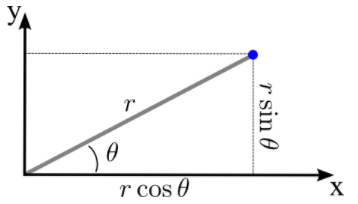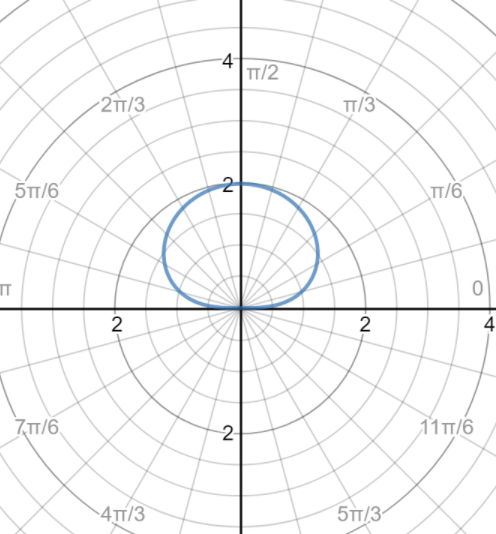Question
Question: Please help How do I graph the polar equation \({{r}^{2}}=4\sin \theta \) ?...
Please help How do I graph the polar equation r2=4sinθ ?
Solution
We will first convert the following equation in polar coordinate equation format and solve it accordingly and plot it in graph.
Complete step by step answer:
First we will consider a function of the type:
r=f(θ)
So we will give values of the angle θ and the function gives you values of r.
To graph polar functions, we have to find points that lie at a distance r from the origin and form (the segment r) an angle θ with the x-axis.
We can calculate Cartesian coordinates of a point with polar coordinates (r,θ) by forming the right triangle. The hypotenuse is the line segment from the origin to the point, and its length is r. The projection of this line segment on the x-axis is the leg of the triangle adjacent to the angle θ, so x=rcosθ. The y-component is determined by the other leg, so x=rcosθ .
Our conversion formula is:
x=rcosθy=rsinθ

So now coming to our question, we have:
r2=4sinθ
Now here we will shift the root on the right hand side, we get:
r=2sinθ
Now from this we can see that radius is having a negative number, as such the square of the radius cannot equal a negative number, therefore we must add the following restriction:
r2=4sin(θ);0≤θ≤π
With this, this allows us to take the square root of both sides of the equation without being concerned with the negative values.
So we get:
r=2sin(θ);0≤θ≤π
With this we will get a graph of equation as follows:

Note:
A polar equation is any equation that describes a relation between r and θ, where r represents the distance from the pole (origin) to a point on a curve, and θ represents the counterclockwise angle made by a point on a curve, the pole, and the positive x-axis.
